Saving Power and Labor: National Sun Yat-sen University developed an artificial intelligence shrimp-farming system that increased shrimp growth by 30%
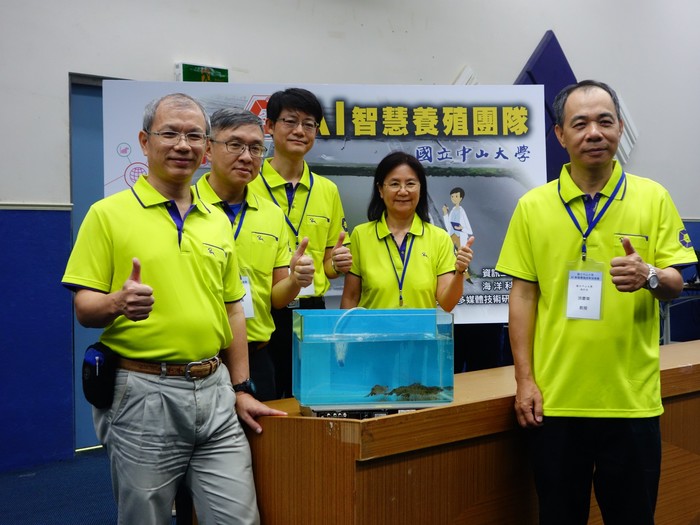
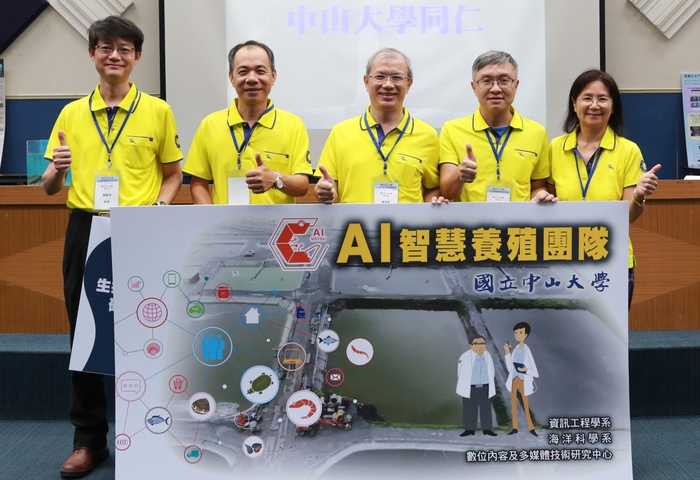
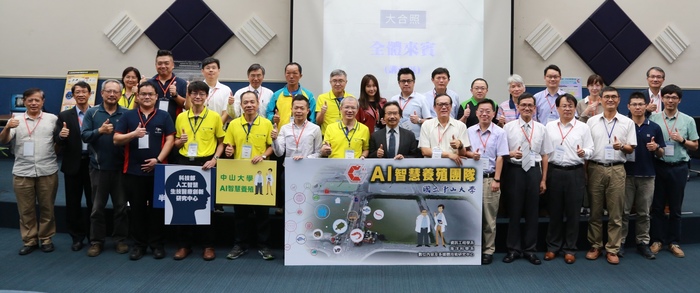
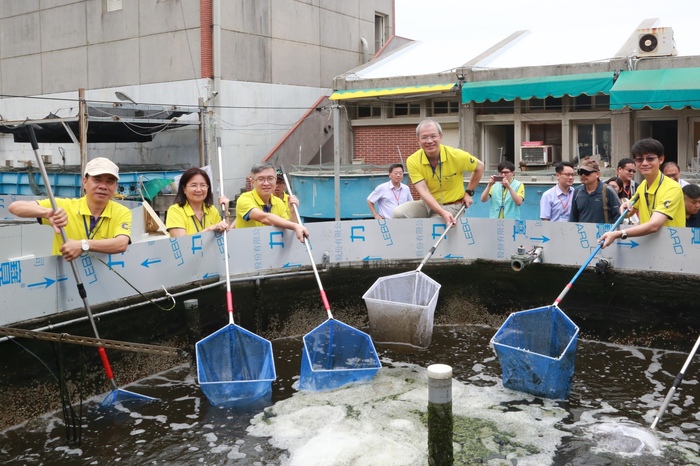
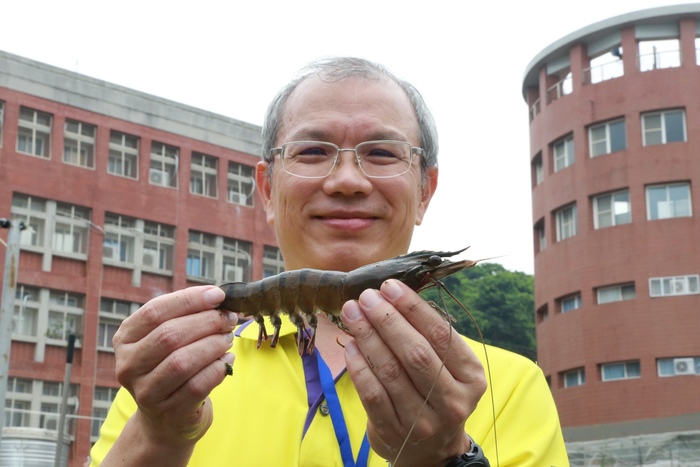
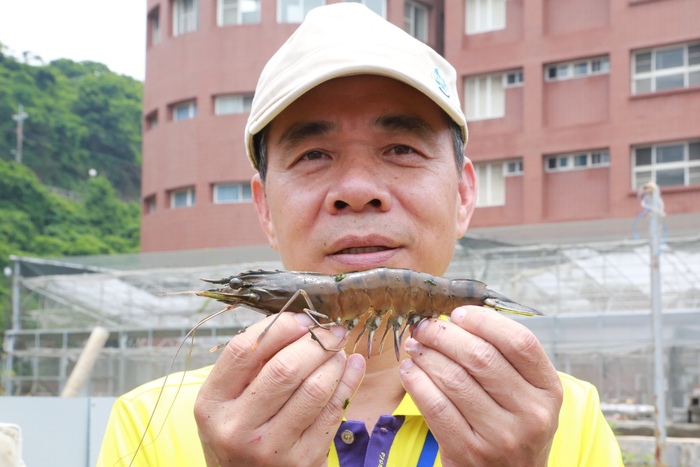
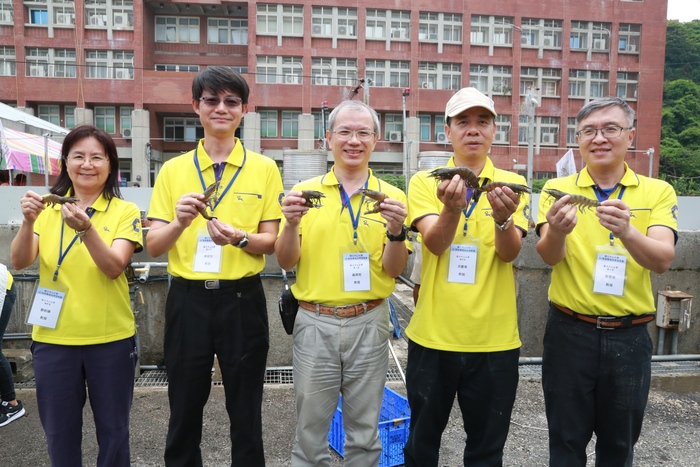
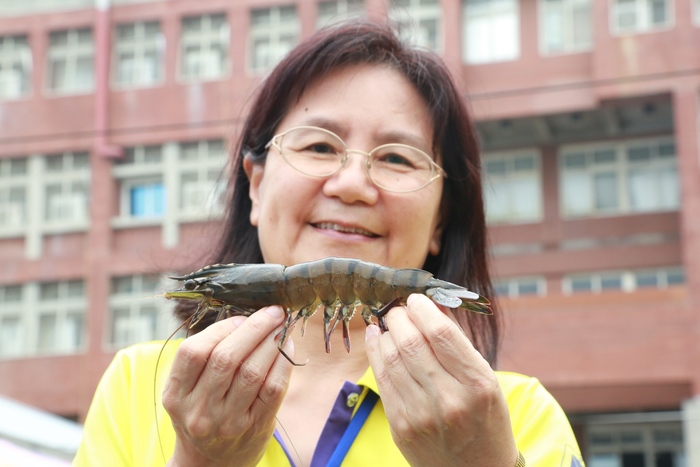
Professors Ing-Jer Huang, Yun-Nan Chang, and Shiann-Rong Kuang of the Department of Computer Science and Engineering, National Sun Yat-sen University, and Professors Chin-Chang Hung and Li-Lian Liu of the school’s Department of Oceanography joined forces to form a cross-disciplinary research team and achieved spectacular results in artificial intelligence (AI) shrimp farming. In the AI Farming Presentation held today (May 23) in the shrimp ponds on the campus of NSYSU, Sizihwan, Kaohsiung, Professor Hung commented that the records from January to May this year suggest that AI farming has increased the survival rate of Asian tiger shrimp (Penaeus monodon) larva from the usual 40%−50% to 70%. Moreover, it has increased shrimp weight by 30% on average and reduced power consumption by 30%. The shrimp-farming system thus “raises the most delicious shrimp with the least investment.”
The research team developed the AI-based farming system by using underwater image enhancement and recognition technologies and achieved success when they applied the system in the school’s farming pools. Visible light and infrared technologies are used to constantly monitor shrimp activity, and this monitoring is supported by AI-based image enhancement and recognition technologies to overcome the hindrance of environmental factors, such as low-visibility waters, water color, and water turbidity. The AI technologies enable automatic estimation of shrimp population, body size, activity level, and feeding frequency. Since October last year, the team has been farming Asian tiger shrimp in pure seawater, and within 6 months or longer, the shrimp have grown to a weight of approximately 30 g each. Professor Hung added that in traditional farming pools, a shrimp gains 2 g of weight per week; by contrast, the AI farming system enables each shrimp to gain 3 g per week, increasing the growth by 30%.
The research team explains that the greatest challenge in shrimp farming is water turbidity. This factor is critical to shrimp growth because turbid water in a farming pool prevents the farmer from visually determining the health of the shrimp population. Furthermore, overfeeding can result in excessive shrimp feed and excrement in the water, hastening the deterioration of water quality and worsening shrimp survival. Professor Hung emphasized that the AI farming system can inform farmers of the best timing for feeding. Additionally, it can “reduce power consumption by more than 30% and reduce the human resources required for feeding and inspection, thereby increasing the production of each pool.”
The team director Professor Ing-Jer Huang commented that the software used to supply the AI farming system’s underwater imaging functions has reached maturation. The research team is currently developing AI chip modules for the key technologies to be applied in edge computing, which is expected to improve system performance and greatly reduce the power demand, network bandwidth needed, and data storage space required. These benefits are conducive to mass application of the system and the creation of a niche market, and the system may be suitable for patent protection. Furthermore, by promoting the transformation of a traditional industry, the research team expects to stimulate the development of relevant industries, thereby attracting the younger generation to invest in the application of AI technology to marine farming and research.
This research project was sponsored by the Department of Life Science, Artificial Intelligence Policy Action Plan, and Moon Shot Project, Ministry of Science of Technology, It involved cross-disciplinary collaboration between the farming equipment, Internet of Things, cloud service, data storage, and farming sectors. Presently, the research team is introducing the AI farming system to private shrimp farmers and is conducting on-site trials with white shrimp (Litopenaeus vannamei) and Asian tiger shrimp.
The research team developed the AI-based farming system by using underwater image enhancement and recognition technologies and achieved success when they applied the system in the school’s farming pools. Visible light and infrared technologies are used to constantly monitor shrimp activity, and this monitoring is supported by AI-based image enhancement and recognition technologies to overcome the hindrance of environmental factors, such as low-visibility waters, water color, and water turbidity. The AI technologies enable automatic estimation of shrimp population, body size, activity level, and feeding frequency. Since October last year, the team has been farming Asian tiger shrimp in pure seawater, and within 6 months or longer, the shrimp have grown to a weight of approximately 30 g each. Professor Hung added that in traditional farming pools, a shrimp gains 2 g of weight per week; by contrast, the AI farming system enables each shrimp to gain 3 g per week, increasing the growth by 30%.
The research team explains that the greatest challenge in shrimp farming is water turbidity. This factor is critical to shrimp growth because turbid water in a farming pool prevents the farmer from visually determining the health of the shrimp population. Furthermore, overfeeding can result in excessive shrimp feed and excrement in the water, hastening the deterioration of water quality and worsening shrimp survival. Professor Hung emphasized that the AI farming system can inform farmers of the best timing for feeding. Additionally, it can “reduce power consumption by more than 30% and reduce the human resources required for feeding and inspection, thereby increasing the production of each pool.”
The team director Professor Ing-Jer Huang commented that the software used to supply the AI farming system’s underwater imaging functions has reached maturation. The research team is currently developing AI chip modules for the key technologies to be applied in edge computing, which is expected to improve system performance and greatly reduce the power demand, network bandwidth needed, and data storage space required. These benefits are conducive to mass application of the system and the creation of a niche market, and the system may be suitable for patent protection. Furthermore, by promoting the transformation of a traditional industry, the research team expects to stimulate the development of relevant industries, thereby attracting the younger generation to invest in the application of AI technology to marine farming and research.
This research project was sponsored by the Department of Life Science, Artificial Intelligence Policy Action Plan, and Moon Shot Project, Ministry of Science of Technology, It involved cross-disciplinary collaboration between the farming equipment, Internet of Things, cloud service, data storage, and farming sectors. Presently, the research team is introducing the AI farming system to private shrimp farmers and is conducting on-site trials with white shrimp (Litopenaeus vannamei) and Asian tiger shrimp.
Click Num:
Share
